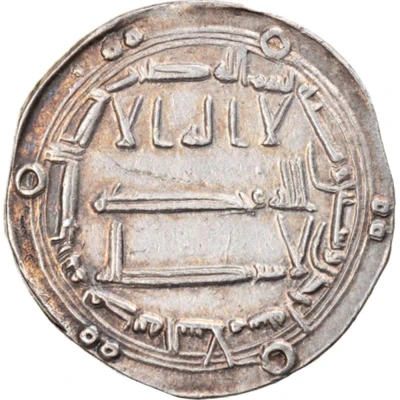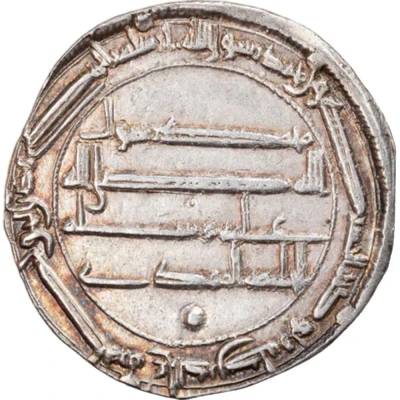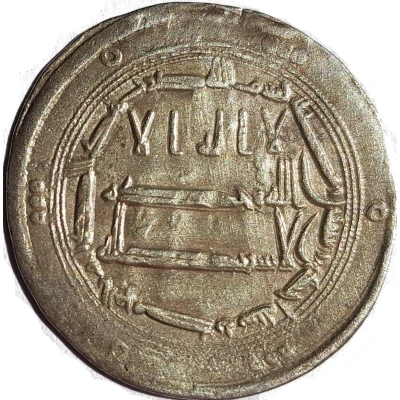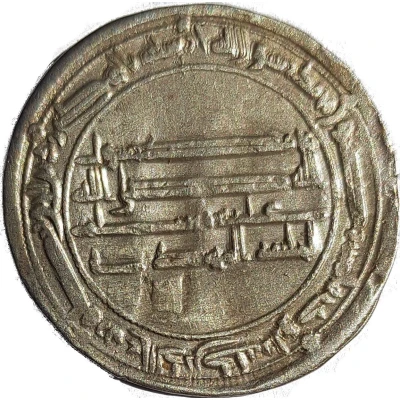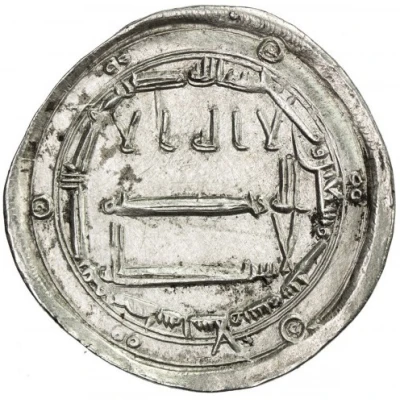
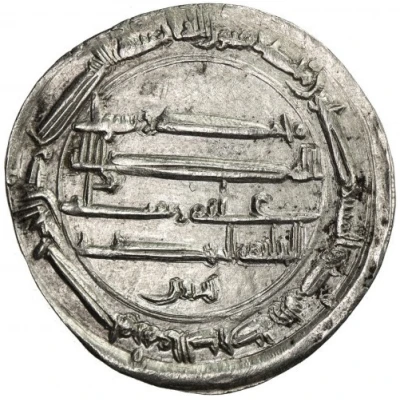

© Stephen Album Rare Coins
Dirham - al-Mahdi
| Silver | 3 g | 23 mm |
| Issuer | Abbasid Caliphate |
|---|---|
| Caliph | Al-Mahdi (775-785) |
| Type | Standard circulation coin |
| Years | 159-168 (776-785) |
| Calendar | Islamic (Hijri) |
| Value | 1 Dirham (0.7) |
| Currency | Dinar (750-1517) |
| Composition | Silver |
| Weight | 3 g |
| Diameter | 23 mm |
| Shape | Round (irregular) |
| Technique | Hammered |
| Orientation | Medal alignment ↑↑ |
| Demonetized | Yes |
| Updated | 2024-10-05 |
| Numista | N#74677 |
|---|---|
| Rarity index | 85% |
Reverse
Script: Arabic
Lettering:
Central Legend
محمد رسول الله صلى الله عليه وسلم
الخليفة المهدي
Marginal Legend
محمد رسول الله ارسله بالهدى و
محمد
دين الحق ليظهره على الدين كله
ولو كره المشركون
Translation:
Muhammad is the Messenger of God/
Gods Prayer and Salutations upon him (PBAH)/
The Caliph al-Mahd/
Muhammad
Muhammad is the messenger of God. He sent him with guidance and the true religion to reveal it to all religions even if the polytheists abhor it.
Comment
For detailed variations between years and mints, visit https://islamiccoins.ancients.info/abbasid/almahdi.htm
Mint marks around the rim on the obverse:
- O oo O oo O oo - Madinat al-Salam (159-164), al-Muhammadiya (166-168)
- oo oo oo oo - Madinat al-Salam (165)
- Ø o Ø o Ø o - al-Basra (161)
- o o o o o - al-Abbasiyya (162-169)
- O O O O O - Kirman (167)
- OOO OOO OOO - Harun Abad (169)
- ⊚ ⊚ ⊚ ⊚ ⊚ - Madinat al-Salam (168)
Interesting fact
One interesting fact about the Standard circulation coin Dirham - al-Mahdi 159-168 (776-785) from Abbasid Caliphate made of Silver weighing 3 g is that it was used as a form of currency during a time of significant cultural and scientific achievement in the Islamic world. The Abbasid Caliphate, which ruled from 750 to 1258 CE, was known for its advancements in mathematics, astronomy, medicine, and philosophy, and the coinage of this period reflects the wealth and sophistication of the empire. The Dirham coin was used for everyday transactions and was also used to pay taxes and tributes to the government. It was a symbol of the empire's prosperity and influence, and its design and craftsmanship were highly valued.
